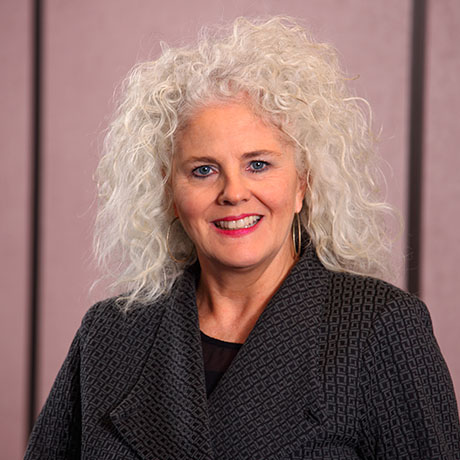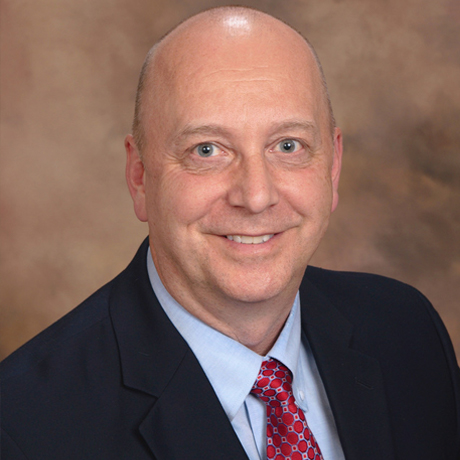It’s All in the Numbers
As you close out this past year and reflect on the first full year without any shutdowns as 2020 brought us, it makes sense to step back and take a look at your numbers. This is the case whether you are in your first year of practice ownership, have owned your practice for ten years, or you are getting closer and closer to retirement. You should always be managing your practice to your numbers while keeping the number one goal of taking care of your patients to the best of your ability.
So that all sounds great, but how do you manage to your numbers? The first step is grabbing your Profit and Loss statement and a Production by Provider or Production by Procedure report for 2020. If you know Microsoft Excel, you can input the numbers into an Excel spreadsheet. If you don’t know Excel, you can grab your handy-dandy calculator.
Most numbers you manage to are calculated based on a percentage of your gross collections. That’s the top number on your profit and loss statement. You should take the number after returns or other credits to gross revenue. Some Profit and Loss statements may call this number Profit and others will call it Revenue.
The first number to look at is your staff expense as a percentage of revenue. Add your staff salaries, payroll tax for staff, and staff benefits. Divide that total by revenue. Your target should be about 25% of revenue. If you’re slightly above 25%, don’t worry, increasing collections while keeping staff salaries flat will help you improve this number. If you’re over 35% and you really don’t think you can improve collections, you should analyze your staff. Maybe you have too many, or maybe your staff that is overpaid. These days, it’s easy to overpay staff since they’re hard to come by. Time and time again, when we look at practice numbers, this is one of the biggest profitability killers.
The next number to look at is facilities expense as a percentage of collections. This includes your base rent plus any of the common areas that you pay for and other facilities expense – garbage, parking lot maintenance, etc. This expense should not be more than 7% to 9% of revenue. If you are significantly higher than this number, you are not maximizing your facility, overpaying on rent, or you have too big of space for what you need. You can either increase collections or decide to downsize your space, sublease space, or do something else that will help get your numbers down in the 7% to 9% range.
Dental Supplies expense is something else to look at. Divide Dental Supplies expense by revenue. The target is 6% of revenue. If you’re a few percentage points off, don’t worry about it. If you’re at 12% to 15% or higher, you may have supplies walking out the door, overstocking your supply cabinet, or you’re buying top-end products. This should be a quick fix if you have a meeting with your person that orders supplies and give them a budget.
Lab expense is similar to dental supplies. If you’re a basic crown and bridge practice, you should be at 7% to 9% of revenues if you don’t use a milling machine in-house or you don’t place a lot of implants. The latter two will skew the numbers. Negotiate with your lab if you are higher than 7% to 9%. If you’re with a high-end lab, you’re at 12% and love their work, don’t change labs. You’re only a few points off. You can make up the difference elsewhere.
The other quick measure is hygiene as a percentage of total collections. Take your Production by Provider report or Production by Procedure report and figure out how much of collections are coming out of hygiene as a percentage of total revenue. The target is to be above 30% of revenue coming from your hygiene program. If you’re in the low 20% or less and you have a general dental practice, you should take a look at your hygiene schedule and see how many patients they’re seeing per day. Maybe their schedule isn’t full, or maybe hygiene is booked out for several months and the hygienist can’t keep up. You will need to analyze this for yourself.
Looking at your numbers is something all business owners do to help them manage their practice. These are a few simple numbers that you can quickly measure a few times per year, make a few changes and you can get your overhead down below the national average of 65%. Best wishes on the New Year and may your overhead be under control.
Read MoreBuyer Trends in the Veterinary Industry
Happy Holidays and congratulations on making it through another year! And what a year it’s been. Covid is still rearing its ugly self in new forms. Wearing masks went away, then came back again. Some veterinary conventions were canceled, some held virtually and others allowed in-person attendance. Corporate veterinary practice buyers are still around. Individual buyers are also acquiring practices albeit hesitantly. Banks started financing practices again. So what’s going to happen in 2022?
We hope that we can get back to some form of normalcy. Wouldn’t it be great to go out to dinner and not have to get carded as if we’re a 21-year-old buying our first beer? Having to show your vaccine card and wear masks is getting to be a pain. Covid is probably going to be around in some form or another for a very long time and will be similar to the flu as time wears on.
Corporate buyers will also be around for a long time. I’ve heard that corporates currently hold between 12% and 22% of all veterinary practices. Depending on who you ask and how you calculate what constitutes a corporate buyer. I would guess the real number is probably around 17%. There has been some consolidation of corporate buyers that is occurring. Getting acquired by a larger corporate buyer is the goal of the smaller corporate buyers. As they get gobbled up, there will be fewer and fewer buyers to drive up the value of practices.
Individuals are still buying practices and will continue to do so forever. It’s our job as practice brokers as well as the job of others in the veterinary industry to educate and assure veterinarians that they can be successful owning a veterinary practice and do very well. Many buyers worry about competing against the corporate owners thinking that they cannot get the same pricing on supplies and services that the big guys receive. Most supply companies have told me that they will in fact give the same pricing on supplies that the corporate owners get.
We wanted to keep you informed and know what’s going on in the veterinary practice buyer world. We wish you a happy and healthy 2022!
Read MoreBuyer Trends in the Veterinary Industry
Happy Holidays and congratulations on making it through another year! And what a year it’s been. Covid is still rearing its ugly self in new forms. Wearing masks went away, then came back again. Some veterinary conventions were canceled, some held virtually and others allowed in-person attendance. Corporate veterinary practice buyers are still around. Individual buyers are also acquiring practices albeit hesitantly. Banks started financing practices again. So what’s going to happen in 2022?
We hope that we can get back to some form of normalcy. Wouldn’t it be great to go out to dinner and not have to get carded as if we’re a 21-year-old buying our first beer? Having to show your vaccine card and wear masks is getting to be a pain. Covid is probably going to be around in some form or another for a very long time and will be similar to the flu as time wears on.
Corporate buyers will also be around for a long time. I’ve heard that corporates currently hold between 12% and 22% of all veterinary practices. Depending on who you ask and how you calculate what constitutes a corporate buyer. I would guess the real number is probably around 17%. There has been some consolidation of corporate buyers that is occurring. Getting acquired by a larger corporate buyer is the goal of the smaller corporate buyers. As they get gobbled up, there will be fewer and fewer buyers to drive up the value of practices.
Individuals are still buying practices and will continue to do so forever. It’s our job as practice brokers as well as the job of others in the veterinary industry to educate and assure veterinarians that they can be successful owning a veterinary practice and do very well. Many buyers worry about competing against the corporate owners thinking that they cannot get the same pricing on supplies and services that the big guys receive. Most supply companies have told me that they will in fact give the same pricing on supplies that the corporate owners get.
We wanted to keep you informed and know what’s going on in the veterinary practice buyer world. We wish you a happy and healthy 2022!
Read MoreWhy Practices Don’t Sell
By Megan  Urban, Practice Transition Consultant
Urban, Practice Transition Consultant
Your practice has successfully worked for you for many years so why isn’t it selling? It could be the transition consultant (broker) you are using, or it could be your practice.
Working with an experienced transition consultant is important. We know where and how to advertise. It doesn’t work to simply advertise on a website. You will want marketing and advertising in schools across the country, dental journals, and county/state societies. An experienced consultant already has a list of potential buyers for your area or type and may have other creative grassroots ideas to find the right buyer.
The right consultant cares about you, your team, practice, and goals. It shouldn’t be just about the commission money. Your consultant should be responsive and professional to potential buyers and you.
A comprehensive valuation and prospectus are important. If you or your consultant price your practice too high, it can be offensive to potential buyers, and they won’t feel comfortable offering a lower price. Even if you find a buyer willing to overpay for your practice, the bank will not finance 100%, which means you have to become a bank for a specific amount of the purchase price.
Sometimes even when you have the right consultant your practice may have other reasons for not selling. Sometimes it’s simply not finding the right dentist at the right time. Often it is because your location is not desirable to new buyers and their families. Sometimes it’s the size of the practice. We all know 3 op practices can be very efficient and profitable, but many buyers want 4 to 6 ops, especially to add more hygiene.
Declining collections the last 3 years or simply low collections can be a deterrent to potential buyers and banks unless you have a reason. They understand more time off due to vacation or health issues. Low new patient count, too many PPOs with low reimbursement, and low hygiene production can be concerning to buyers.
Most buyers understand they may need to update style or equipment and technology, but if it’s a lot of cost and effort, they may keep looking for a better practice.
If your practice falls into any of these areas of concern, it will take more time than the average to sell. Lowering the price may help, but if there is no interest, it’s not the price that’s the problem. Don’t give up or get mad, just understand that while your practice may have been perfect for you, it can be a while to find the right buyer.
4 Interesting Things to Implement So Your Dental Office Runs Smoothly
By Dr. Mehmood Asghar
When you walk into your dental office and see your staff members bustling around you, you might assume they are working productively. But your staff and employees are constantly trying their best to catch up with their daily tasks; they are just busy – not productive.
A successful dental practice is one where routine tasks are streamlined, and all processes run smoothly. If despite your best effort, you and your team fail to achieve your key performance indicator (KPI) goals, it is time to make some changes. Here are 4 things that you can implement in your dental practice to improve productivity and ensure that your training runs smoothly:
1. Invest in Good Practice Management Software
A practice management software is not just necessary for billing purposes or to manage patient records. Modern practice management software takes most of the burden off your team’s shoulders and automates various processes. For example, instead of writing individual appointment reminder emails to patients, the software can automatically send reminders and even reschedule appointments if needed.
Besides, with modern software, you don’t need to maintain your material inventory manually. You can simply assign a barcode to all the products, and the system will record the information regarding the quantity and expiry dates of each item. The system will automatically inform you if any material is short in supply or is about to expire.
Most importantly, good practice management software allows you to manage your finances – cut unnecessary spending and increase spending in areas that matter, like buying new equipment, refurbishing the waiting room, etc. The software will provide you with a detailed overview of your earnings and expenditures, and help you identify exactly where you’re leaking money.
2. Buy State-of-the-art Equipment
Being a successful clinician requires two major things: clinical expertise and the right armamentarium. Investing in modern diagnostic or therapeutic equipment will help you improve your treatment outcome, reduce treatment time and increase productivity. For example, it would be a good idea to invest in a desktop 3D printer: instead of waiting for 1-2 weeks for your lab to prepare a patient’s crowns, why not print them chairside in one day?
Fortunately, 3D printers are much more cost-effective today than they were a few years ago. According to research by SmarTech Analysis, in-office dental 3D printers, capable of printing surgical models, implant templates, clear aligners, and even dental prostheses, may cost less than $5000 by 2021.
You may also consider investing in 3D imaging technology. Today, dental implants have become the most favorable and desirable tooth replacement option. According to the American College of Prosthodontists, over 2.3 million implant-supported crowns are made annually in the US alone. With this considerable reliance on dental implants for tooth replacement, it only makes sense to invest in equipment that aids in implant therapy. Cone-beam CT (CBCT) technology considerably improves the clinical outcome of implant and other oral surgical procedures. Besides, this technology can also be used in the early diagnosis and management of oral disease and malignancies.
3. Automate Processes
Did you know that a significant time of your employees is spent in the sterilization control room? This is not because they are lazy; it’s because they have to frequently wash, clean, and sterilize dental instruments – either because of a small autoclave machine or due to increased patient flow. Regardless of the main reason, you can improve your team’s productivity by buying a fully automated sterilization system, which takes away the multiple, time-consuming steps involved in manually sterilizing the instruments. The initial cost of such equipment might be high, but it will prove a worthwhile investment in the long run, especially considering the time saved.
4. Staff Training and Workshops
While seemingly unessential, staff training and workshops to refresh/upgrade their clinical skills and enhance their expertise in inpatient/data management software go a long way in improving their efficiency. These workshops also ensure that all staff members remember their roles and responsibilities, thereby streamlining the work in your practice.
No matter how good a clinician one is, they cannot run a successful practice unless they are seasoned managers. According to the statistics provided by the American Dental Association, the average hours worked by dentists in 1900 were 1,810.6, compared to 1448.8 hours in 2020. This downward trend shows the impact of the latest technology and good practice management in increasing dental office efficiency, productivity, and earnings. So, follow the tips given in this article to convert your practice into an efficient, productive, and profitable business.
Author bio: Dr. Mehmood Asghar is a dentist, an educator, and a researcher in dental biomaterials. He is currently working as an Assistant Professor in Dental Biomaterials at the National University of Medical Sciences, Pakistan, in addition to pursuing a Ph.D. in Dental Biomaterials. Apart from his professional activities, Dr. Asghar loves reading, writing, and working out.
Read More
 By
By  By
By